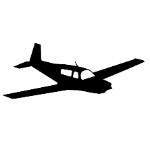Avoiding vertigo on instrument approaches
-
Members Online
- pkellercfii
- PT20J
- gacoon
- Rwsavory
- Mooney-Shiner
- BrentS
- KB4
- Pierre07
- redbaron1982
- Ned Gravel
- larryb
- Schllc
- jimbgi
- Mark89114
- Crawfish
- amillet
- alextstone
- TCC
- bluehighwayflyer
- Dick Denenny
- 802flyer
- ajudson
- StevenL757
- mooneydemi
- FoxMike
- richardbrochu27
- eman1200
- Captainhog
- ArtVandelay
- exM20K
- AH-1 Cobra Pilot
- ELysek1
- jcolgan
- Fredo0709
- good2eat
- N201MKTurbo
- Hank
- Niko182
- Brad B


Recommended Posts
Join the conversation
You can post now and register later. If you have an account, sign in now to post with your account.